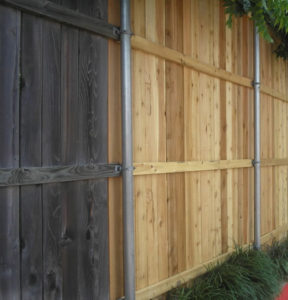Get Your Fence Summer-Ready with Top-Notch Fence Staining Services!
Get Your Fence Summer-Ready with Top-Notch Fence Staining Services!
Blog Article
Exactly How to Choose the Right Fence Stain for Your Building
When it pertains to enhancing the appearance and toughness of your residential property's fencing, selecting the right tarnish is a crucial choice that calls for careful factor to consider. With a myriad of options available out there, each dealing with different wood types, colors, and openness degrees, the process can rapidly become frustrating. Making an informed choice can significantly influence the overall visual appeals and longevity of your fence. So, just how can you ensure that you pick the excellent fencing discolor that straightens with your building's design and upkeep requirements? Let's discover some essential variables to direct you in this decision-making procedure.
Understanding Timber Types
To select the proper fencing tarnish, it is vital to have a detailed understanding of the numerous types of timber frequently utilized for fence. When picking a fence stain, it is important to take into consideration the kind of timber being made use of to make certain compatibility and optimum protection. Comprehending the attributes of different wood kinds will certainly aid you make an educated choice when it comes to selecting the appropriate fencing tarnish for your home.
Selecting the Right Shade
Choosing a proper shade for your fencing stain is an important decision that considerably influences the overall aesthetic appeal of your residential or commercial property. Lighter shades such as whites or light grays can make a fencing appear larger and add a touch of style to your property. Eventually, the best shade choice will certainly enhance the elegance of your fencing and elevate the overall curb charm of your home.

Taking Into Consideration Openness Levels
When selecting the appropriate color for your fence tarnish, another important element to take into consideration is the level of transparency that will certainly best fit your property's aesthetic and upkeep demands. Transparency degrees in fence discolorations normally drop into 3 categories: transparent, semi-transparent, and strong. Take into consideration the level of exposure your fence faces, the preferred upkeep regularity, and the visual you want to accomplish when choosing the appropriate openness level for your fence discolor.
Assessing Upkeep Needs
Considering the longevity and maintenance of your fencing, reviewing the upkeep needs is essential in determining the most suitable fencing tarnish for your building. The degree of upkeep required for your fencing can vary depending upon aspects such as the kind of wood, weather condition problems in your location, and your individual preferences.
When assessing upkeep requirements, it is important to think about the longevity of the fence stain. Some stains call for even more constant reapplication than others, so selecting a tarnish with a much longer lifespan can help in reducing the total upkeep requirements of your fence (Fence Staining Service). Furthermore, aspects such as resistance to UV rays, water, and mildew can influence just how often you require to re-stain your fencing

Examining Samples Prior To Application
Prior to using any fencing discolor, it is advisable to perform example tests to make certain compatibility with the timber and desired aesthetic outcome. Checking examples enables you to examine just how the stain will certainly engage with the specific kind of wood made use of in your fencing, as various timbers can absorb discolorations in a different way. To begin, pick a small inconspicuous area of the fencing to use the stain examples.
Conclusion
Finally, selecting the appropriate fencing tarnish for your property includes understanding the wood type, picking the best shade, considering openness degrees, assessing upkeep requirements, and screening samples prior to application (Fence Staining Service). By taking these elements into consideration, you can make sure that your fencing stain matches your building while providing the required security and durability. Make a notified choice to improve the look and long life of your fencing
Report this page